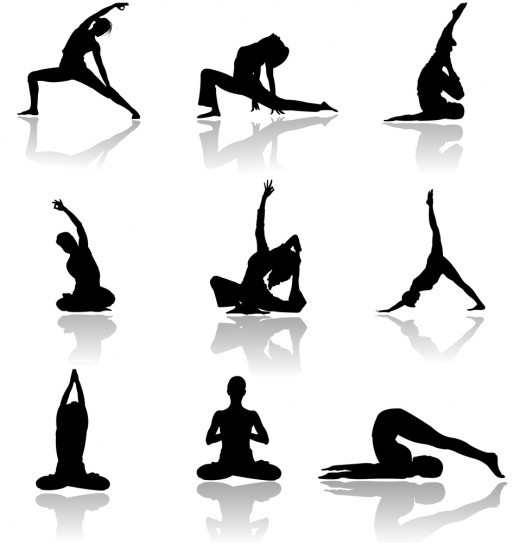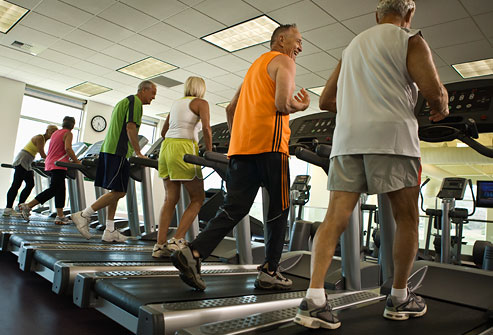A Medical Doctor’s Recommendations On Exercise And Fitness: Target Heart Rate And A Simple Exercise Programme
Regular Exercise Reduces The Risk Of Somatic Disorders

Exercise And Disease
Our risk of developing many illnesses, especially long term (chronic) disease, may be lower if we are physically active. Becoming more active can also help relieve symptoms of some chronic diseases and keep some of them from getting worse. Exercise helps prevent or helps in the treatment of the following:
- Heart diseases
- Hypertension
- Diabetes mellitus
- Weak, fragile bones (Osteoporosis)
- Painful inflamed joints (arthritis)
- Problems with sleeping (insomnia)
- Problems with muscles and ligaments such as low back pain, neck pain and shoulder problems.
A daily exercise programme can provide a way to share activity with family and friends while helping establish good heart- healthy habits. For children, daily exercise deters conditions such as obesity, high blood pressure, poor cholesterol levels and poor lifestyle habits that lead to heart attack and stroke later in life. For older people, daily physical activity helps delay or present chronic illness and diseases associated with aging and maintains quality of life and independence longer.
Simple 7 Min Beginner Workout
Exercise With A Target

Target Heart Rate
This is a measure of cardio-respiratory endurance. A useful way to see how hard we are exercising is to check our heart rate. We gain most aerobic benefit when our exercise rate is 70 to 80% of our maximum heart rate. Maximum heart rate = 220- Age (220 is a fixed value). E.g. for a 30 year old person, the maximum heart rate is 220- 30 = 190.
Optimal Heart rate = 60 to 80% X 90 = 114 to 152 beats/minutes. Optimal range= 114 to 152 beats per minute.
You should always determine our heart rate before exercising. After exercising for about 10 minutes, stop and take your pulse. Adjust the intensity of your exercise so that your heart rate stays between optimal ranges (60 to 80%) of maximum heart rate. Target heart rate is only a guide. Each individual is different, so pay attention to how you feel. Also measure your blood pressure before and after exercise.
The Talk/Sing Test During An Exercise

A Simple Exercise Program (The Talk/Sing Test)
A 3o minutes exercise program consist of 3 phases
- Warm up period of 5 minutes
- Maintenance period of 20 minutes
- Cooling down period of 5 minutes
Before starting any exercise programs, you need a medical check and exercise prescription by a medical doctor. The prescription will specify the type, intensity, frequency and duration of the exercise appropriate for you. Some tragedies have occurred from ignoring this basic recommendation.
The Talk/Sing Test
This is to determine your ideal exercise pace:
- If you can’t talk and exercise at the same time, you are going too fast
- If you can talk while you exercise, you are doing fine
- If you can sing while you exercise, it is recommended to exercise a little faster.
Your pace is appropriate when you can talk but not sing while doing an activity.
Finally, call your doctor right away if you have any of the following symptoms during exercise: Shortness of breath for more than 10 minutes, chest pain or pain in your arms, neck, jar or stomach, dizzy spells, pale skin, very fast or irregular heartbeat, cold sweats, nausea and vomiting and weakness, swelling or pain in your legs.
Your fitness regime will be best if a medical doctor is involved!
© 2014 Funom Theophilus Makama









